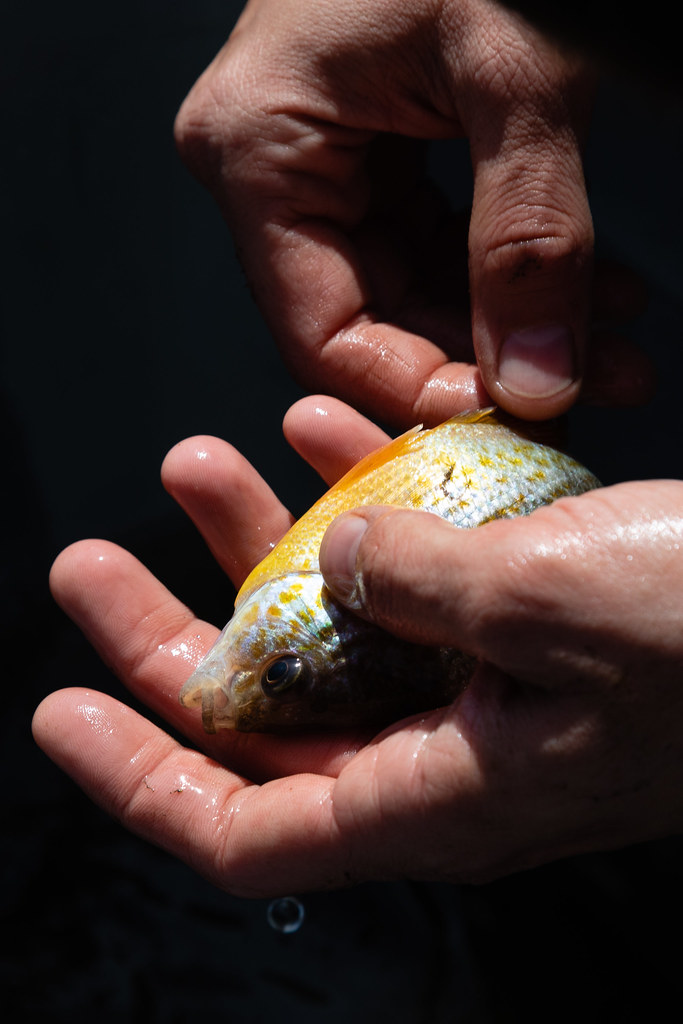Bluegill
Lepomis macrochirus
The bluegill is a colorful sunfish with an olive green, saucer-shaped body. It lives in lakes, ponds, streams and other freshwater bodies throughout the Chesapeake Bay watershed.
This section shows one large critter image at a time. Use the thumbnails that follow to select a specific image to display here.

This gallery contains a grid of small thumbnails. Selecting a thumbnail will change the main image in the preceding section.
Appearance
The bluegill has a compressed, saucer-shaped body. It is mostly olive green with an orange to yellowish belly and bluish-purple iridescence on its cheeks. It has black earflaps and faint vertical bars on its sides. Its slightly forked tail fin has rounded lobes. The dorsal fin has about 10 spines on the front portion, and the back portion is rounded with a dark smudge at the base. Bluegill usually grow 4 to 6 inches in length, but can grow to 12 inches long.
Feeding
The bluegill eats a variety of small organisms, including insects, crayfish and bits of vegetation. They prefer quiet, slow-moving waters with lots of vegetation and a sandy, muddy or gravel bottom. In winter, schools form in deeper river channels.
Predators
Larger fish, fish-eating birds (such as hawks, herons, cormorants and waterfowl), fish-eating mammals (such as raccoons) and humans, particularly young anglers, hunt bluegill.
Reproduction and life cycle
Spawning occurs from April to September, once water temperatures warm to about 54 degrees Fahrenheit. Bluegill often spawn more than once per season. Males build nests in shallow areas by making a round hole in the sand or gravel. Bluegills will often build nests close to one another, creating colonies. The female lays several hundred eggs into the nest. The male fertilizes the eggs, then guards them from other fish and predatory insects. He uses his tail to fan away any particles or detritus that could smother the eggs. Bluegill can live to 11 years old.
Did you know?
- Bluegills can be confused with the pumpkinseed, another sunfish. Bluegills can be distinguished by their black earflaps and the dark smudge on the back of their dorsal fin. However, bluegills and pumpkinseeds often interbreed, resulting in some confusing hybrids.
- These fish are a favorite of young anglers because they are playful and very easy to catch. Bluegills will eagerly bite onto nearly any small natural or artificial bait.
- Bluegill is well-known for being a delicious fish to eat.
Sources and additional information
- Fishes of Chesapeake Bay by Edward O. Murdy, Ray S. Birdsong and John A. Musick
- Life in the Chesapeake Bay by Alice Jane Lippson and Robert L. Lippson
- Maryland Fish Facts: Bluegill – Maryland Department of Natural Resources
- The Virtual Aquarium: Bluegill – Virginia Tech
- Sunfish – New York State Department of Environmental Conservation
- Animal Diversity Web: Lepomis macrochirus – University of Michigan Museum of Zoology
